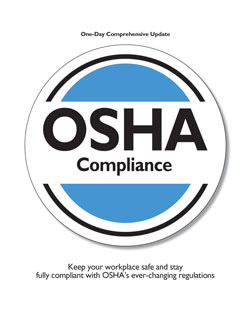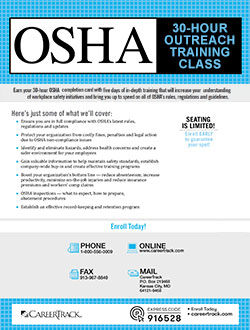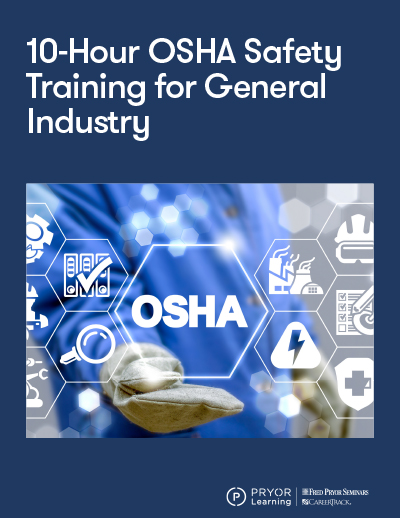Sizzling Summers: Staying Safe and Healthy

Summer is a season for outdoor activities – for both work and play. Heat is a major consideration during the summer months – but other concerns are important to keep in mind too. Let’s look at guidelines for enjoying and productively engaging in outdoor activities, while minimizing the risks associated with heat exposure and other summer hazards.
Dealing with the Heat
OSHA (Occupational Safety and Health Administration) provides complete guidelines and regulations to address heat safety in the workplace. Heat safety is a critical issue, especially for workers in industries such as construction, agriculture, landscaping and manufacturing, where exposure to high temperatures can pose significant health risks. Here’s an overview of OSHA’s Heat Safety Regulations and Guidelines.
Under the General Duty Clause of the Occupational Safety and Health Act, employers are required to provide a workplace free from recognized hazards that can cause death or serious harm. This includes protecting workers from extreme heat. Some states have additional requirements, supplementing Federal rules.
Heat Illness Prevention Campaign and Programs:
- OSHA conducts an annual Heat Illness Prevention Campaign to raise awareness among employers and workers about the dangers of heat exposure and the importance of implementing preventive measures.
- Training resources, including fact sheets, posters and online courses, are available to educate workers and employers about recognizing and preventing heat-related illnesses. These resources can also help non-workers be outside more safely.
- OSHA advises employers to develop and implement comprehensive heat illness prevention programs – these need to be tailored to specific workplace conditions, based on a regular risk assessment.
- Planning includes having procedures set for responding to heat-related emergencies, including providing first aid and ensuring access to medical care.
SAVE $10 AND TRAIN ON THIS TOPIC TODAY
Key Recommendations for Employers:
- Water, Rest and Shade: It is vital to have access to drinking water, regular rest breaks, and shaded or air-conditioned areas to prevent heat stress. Set up hydration stations with water, electrolyte drinks and shaded rest areas.
- Gradual Acclimatization: It is useful to implement acclimatization protocols, gradually increasing exposure to hot conditions over a period of 7-14 days, allowing bodies to adjust.
- Engineering Controls: Use fans, exhaust systems or other ventilation methods to reduce heat exposure in confined or enclosed areas. Implement cooling technologies such as misting fans or evaporative coolers to reduce ambient temperatures.
- Monitoring: Monitoring weather conditions can help you adjust schedules, including scheduling heavy work or exercise to cooler times of the day. OSHA even publishes a mobile app provides real-time heat index information and safety recommendations based on current weather conditions.
- Clothing: If uniforms are provided, select designs to include loose, lightweight and light-colored clothing to help keep cool and reflect heat. Consider allowing standard use of wide-brimmed hats and sunglasses with UV protection (which will also help workers see!). Choose fabrics that pull moisture away from the body, such as cotton.
- Training and a Buddy System: Providing training can help workers recognize heat stress in themselves and others – and can make it easier to check in on each other. Implementing a buddy system is a great way to have people monitor each other for signs of heat-related illness. This can help ensure early detection and intervention.
Signs of heat-related illnesses include skin irritation or rashes caused by excessive sweating; muscle cramps, pains or spasms due to heavy exertion in hot environments; or heavy sweating, weakness, dizziness, nausea, headache and fainting. The worst case is heat stroke, which can lead to confusion, altered mental status, loss of consciousness and hot, dry skin. This is a medical emergency.
Following OSHA’s guidelines – for work or play – and implementing a robust heat safety program can significantly reduce the risk of heat-related illnesses and create a safer environment.
Staying Safe Outdoors
Avoiding heat-related illnesses is a goal priority during the summer, but there are other important areas to consider – for work outside, outdoor teambuilding or a personal outing with friends of family. Staying safe outdoors requires a combination of preparation, awareness and proactive measures. Here are several ways to stay safe in the summer:
Traffic and Driving Safety – Lots of people are out on the road and walking around during the summer. And, unfortunately, there are people who drive under the influence of alcohol. Be particularly cautious when driving and crossing streets.
Food Safety – Part of outdoor safety includes keeping an eye on your food. Keep perishable foods in a cooler with ice packs to prevent spoilage and foodborne illness. Wash hands before serving food and use clean utensils. Consider also what will raise the least concerns for your eaters – avoiding the mayo may be a good call.
Crowd Safety – Concerts, ball games and other large group events are another natural part of summer – but large groups come with their own risks. When in a large venue, know where the emergency exits are, watch your valuables carefully, and have a plan for an emergency. Have a fully charged mobile phone, and keep it close.
Insect Protection – Critters enjoy the summer too, and can be a source of both pain and disease. Use insect repellent containing EPA-approved ingredients to protect against ticks and mosquitoes. Wear long sleeves and pants when in areas with high insect activity.
Stay Informed – If you are travelling, consider signing up for local alerts and notifications for weather updates and emergency information. Have a plan in place for extreme weather conditions, such as knowing where the nearest shelter or cooling center is located. Keep your devices charged in case of a power loss.
Stay Hydrated – In addition to other heat-related precautionary steps, drinking should be a priority – try to drink at least 8 ounces of water every 20-30 minutes during intense activity or exposure to the sun. Limit intake of coffee and alcohol, as they increase dehydration and may impair your judgement. For prolonged outdoor activities, consider drinks that replenish electrolytes, such as sports drinks.
Regular Health Check-Ups: Staying healthy can also reduce summer-related illnesses – this means eating well, maintaining a healthy weight, sleeping well and exercising in safe environments. Know yourself and your limits. This is particularly important if you have pre-existing conditions that may make you more susceptible to heat-related illnesses.
By implementing these safety measures, employers, friends, and families can significantly reduce the risk of heat-related illnesses and ensure a safer environment during the summer. This proactive approach not only enhances well-being but also improves overall productivity and satisfaction – at work or play.
Special Cases: Preparing for Remote Locations
Outdoor activities may include the special case of going to a remote location – while this is generally done for personal reasons, there are times when work groups choose to engage in a long-distance teambuilding trip as well. Planning safe activities in such a location requires careful preparation to ensure a fun and secure experience. Here are key steps to consider:
- Research Your Destination: Understand the terrain, climate and potential hazards of the area. Check recent trip reports and local advisories. Know the wildlife, weather patterns and any environmental risks such as flash floods or landslides.
- Create a Detailed Plan: Outline your itinerary, including routes, rest stops and estimated times of arrival. Share this plan with a trusted person who will not be joining you. They need to know where you are and when, and can call for help if you don’t return as scheduled. Try to update them if your plans change
- Pack Essential Gear: Equip yourself with the right gear for the activity and environment. Essentials include navigation tools (map, compass, GPS), first aid kit, appropriate clothing and sufficient food and water. Pack a multi-tool, flashlight and fire-starting materials. Carry a sturdy communication device, like a satellite phone or personal locator beacon, especially where cell service is unreliable.
- Learn Basic Survival Skills: Understand how to use your gear effectively. Learn to navigate without GPS, start a fire, and build a shelter. Basic first aid knowledge is crucial for handling injuries until help arrives.
- Check Weather Conditions: Monitor weather forecasts up to your departure and continuously during your trip. Weather can change rapidly in remote areas, so be prepared for all possibilities, including extreme conditions.
- Travel with a Group: A group provides safety in numbers, shared resources, and mutual support. Ensure that all group members are physically capable and adequately equipped for the trip.
- Stay Alert and Flexible: Remain vigilant to your surroundings and conditions. Be prepared to adjust your plans if you encounter unexpected obstacles or hazards. Don’t take unnecessary risks; safety should always be your priority.
By thoroughly preparing and staying adaptable, you can significantly enhance your safety and enjoy your remote adventure with greater peace of mind.
Workplace OSHA Training
Pryor Learning offers a number of courses and resources in the OSHA Training & Workplace Safety
Training category. These training programs foster employee safety and compliance, and fill both individual and organizational needs. Examples include a one-day virtual OSHA Training; Cal/OSHA (California) specialized training, training on records and focused training for construction and healthcare environments. We also offer a Safety Toolbox Series, including a video for online or offline viewing.
Pryor Learning also offers OSHA 10- and 30-Hour Online Training, allowing you to obtain your 10- or 30-hour OSHA student card through our partnership with HSI. HSI is the top OSHA-authorized online training provider with years of experience and dedication offering OSHA-related training.






